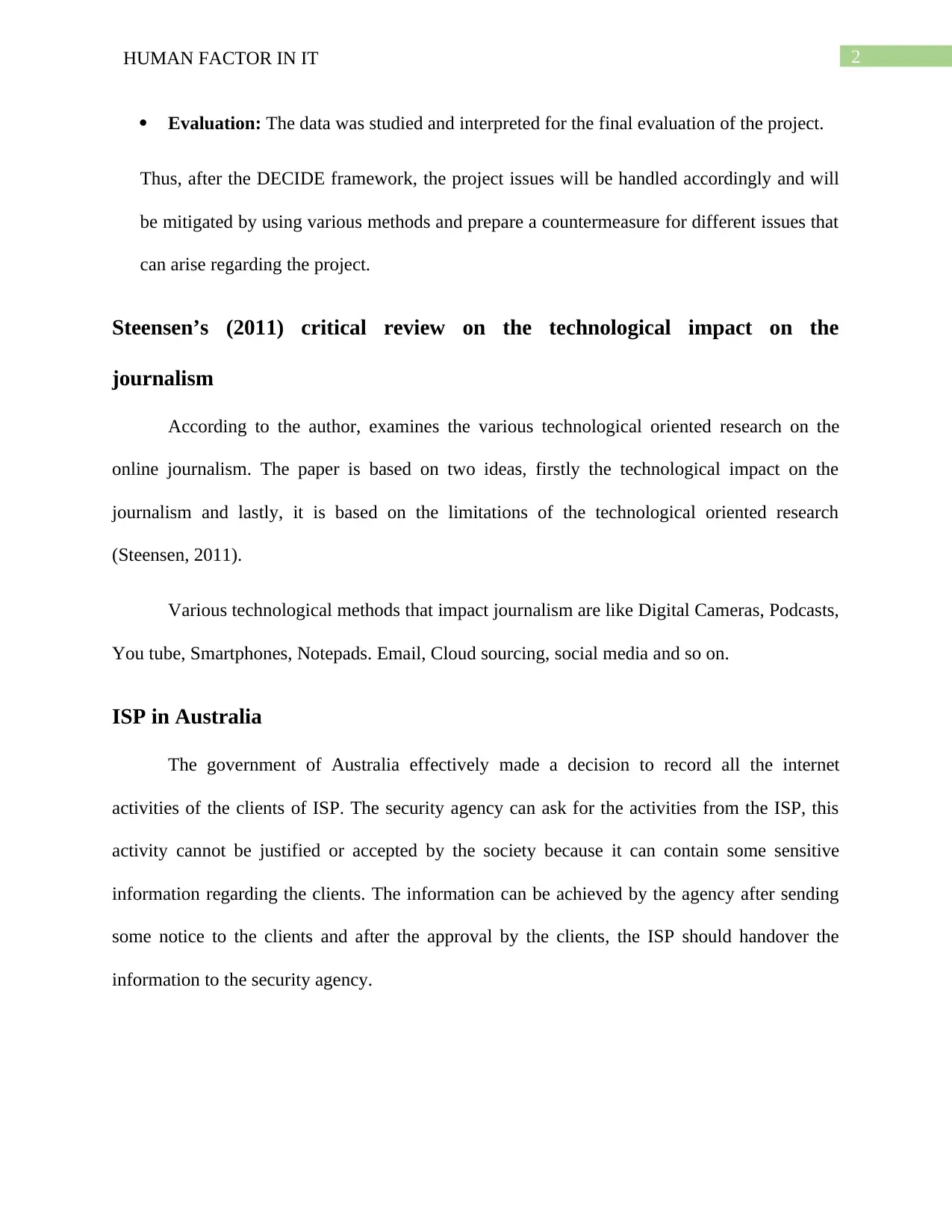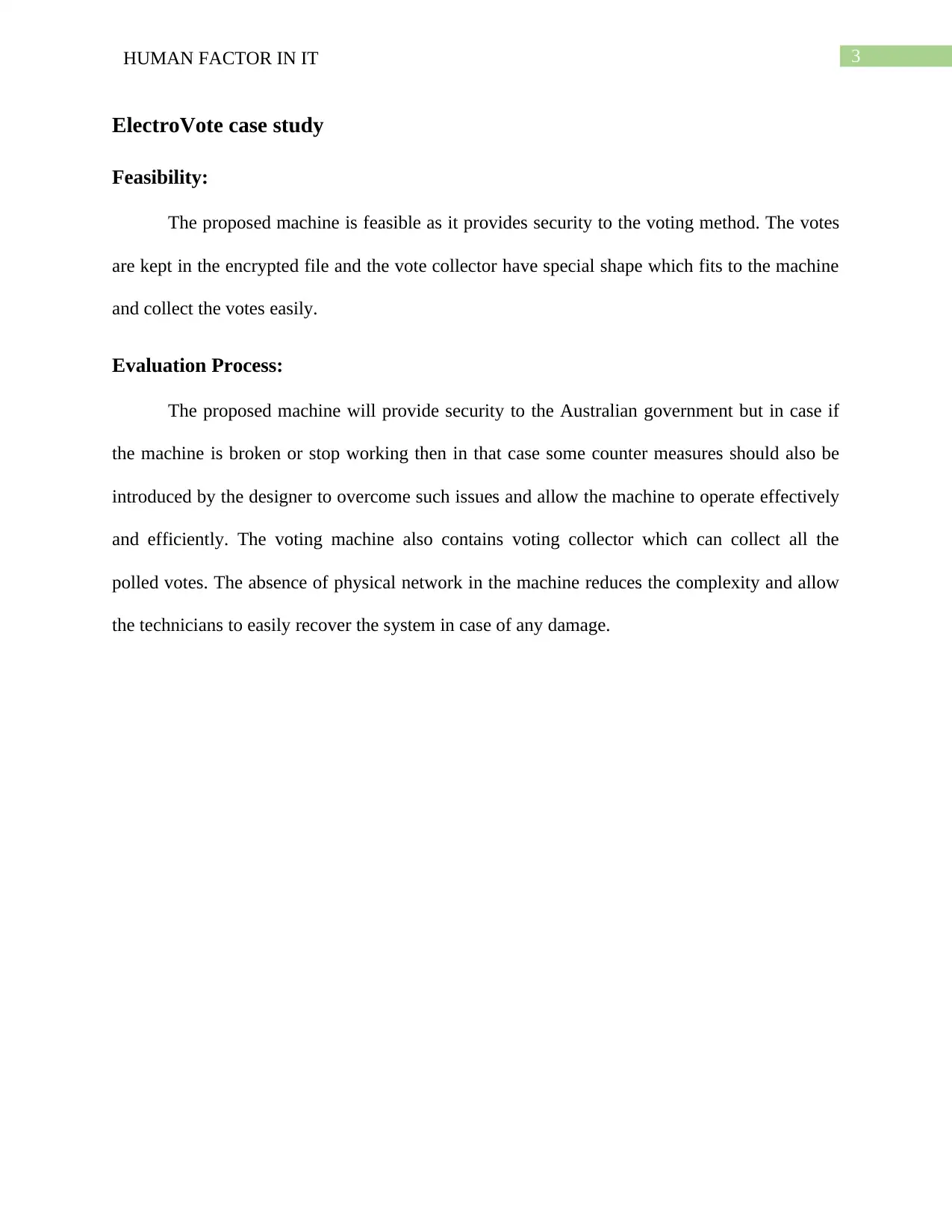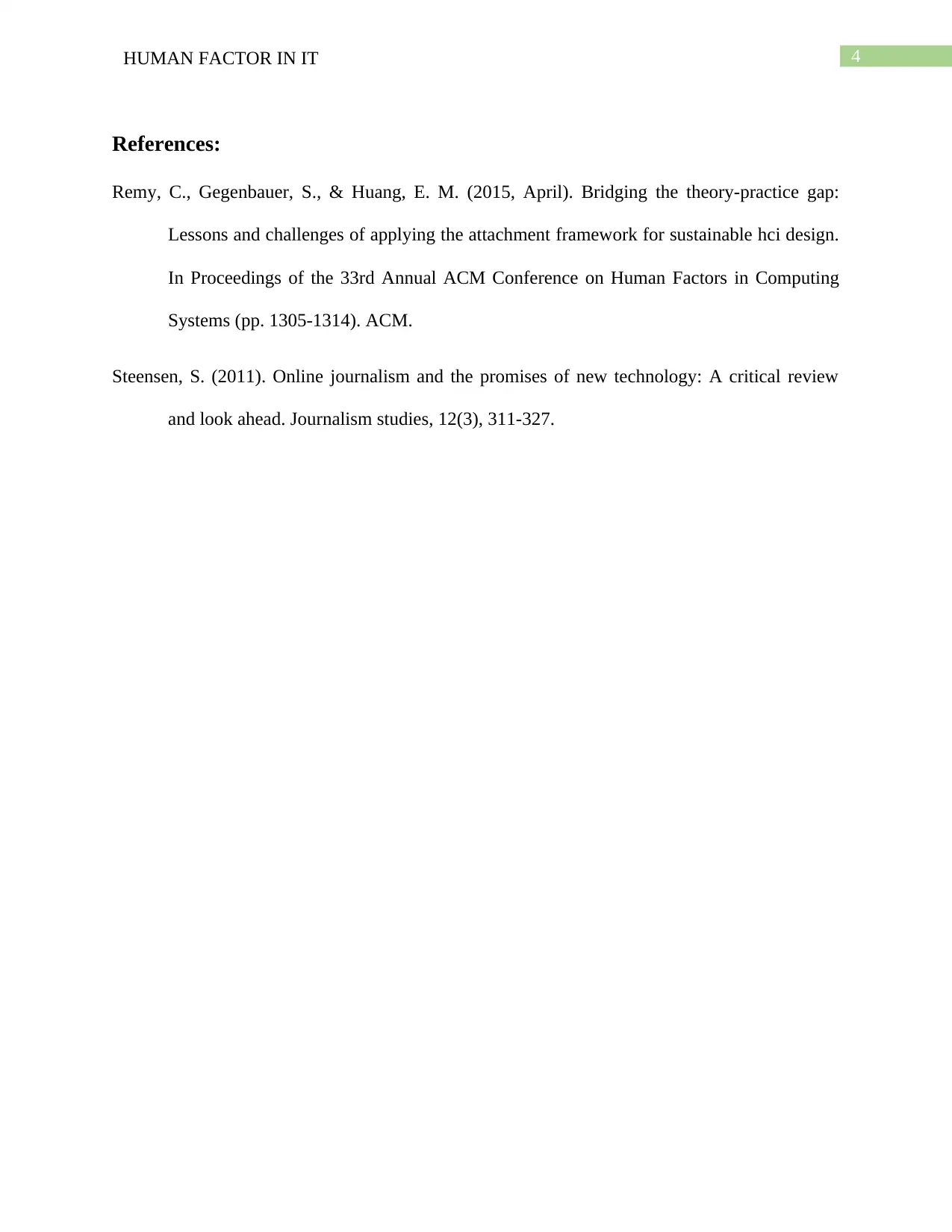Human Factor in IT Assignment: Project Evaluation and Case Studies
VerifiedAdded on 2022/12/12
|5
|818
|115
Homework Assignment
AI Summary
This assignment explores the human factor in IT, focusing on project feasibility, evaluation methodologies, and case study analyses. It begins by assessing the feasibility of a project based on Human-Computer Interaction (HCI) principles, emphasizing the importance of adherence to HCI techniques and the potential drawbacks of making changes to a project's operational complexity. The assignment then details the evaluation process using the DECIDE framework, outlining how goals are determined, stakeholders are identified, and the project is tested and evaluated to identify and mitigate potential issues. The assignment also includes a review of Steensen’s (2011) work on the technological impact on journalism, as well as case studies on ISP activities in Australia and the ElectroVote machine. The ElectroVote case study examines the feasibility and evaluation of the voting machine, addressing security measures and potential counter-measures for system failures. The assignment references relevant academic sources to support its analyses and recommendations.
1 out of 5











![[object Object]](/_next/static/media/star-bottom.7253800d.svg)